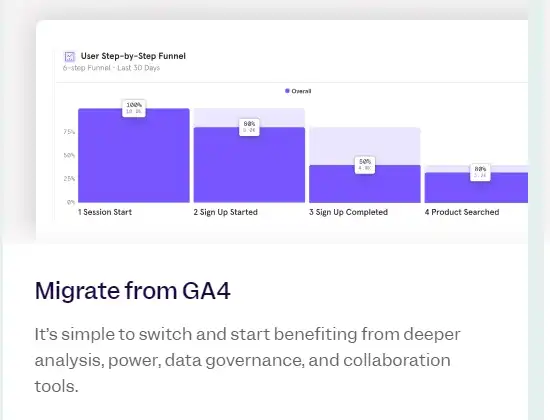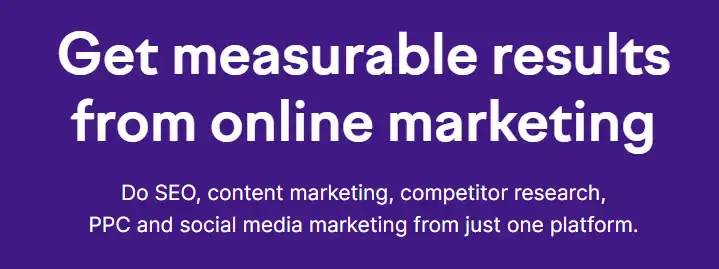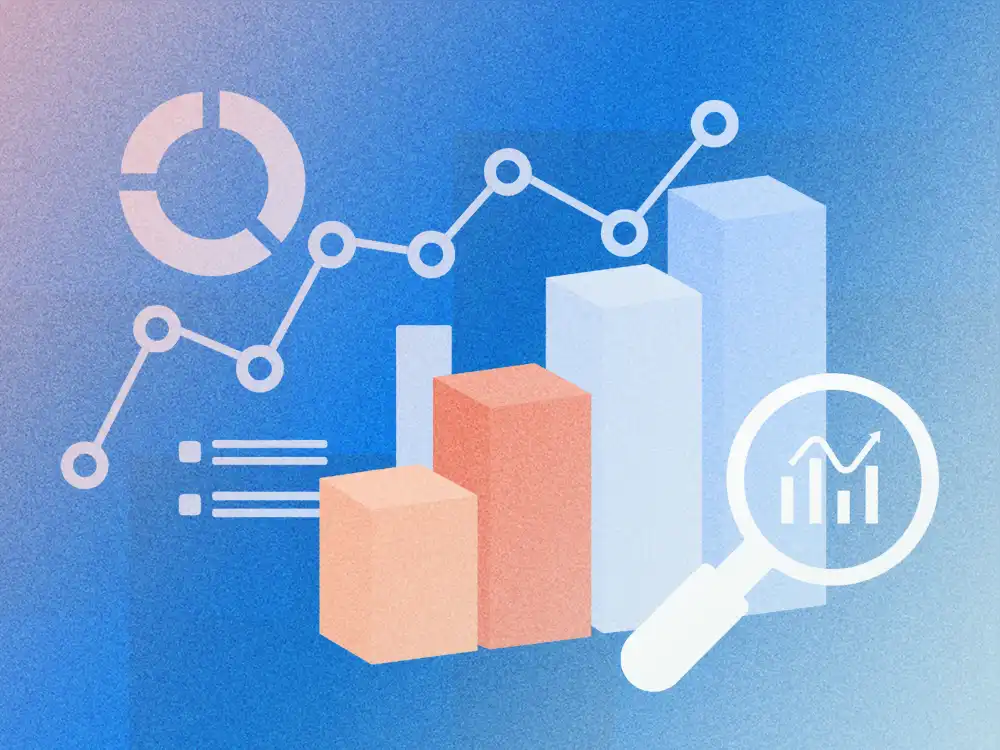What is Google Analytics / GA4?
Website and app analytics is an essential tool today for any digital business looking to optimize its products and services, grow its customer base, and deliver the experience that consumers are looking for.
Google Analytics 4, or GA4, is the latest evolution of Google’s analytics service that provides insight into website and app behavior, user experience, and marketing efforts. GA4 replaced Google’s Universal Analytics, the previous version of the analytics service, in 2023. Because Google Analytics is free to anyone with a Google account, many small and medium-sized businesses use it to track website performance, accessing basic statistics and analytics tools for search engine optimization and marketing purposes.
By collecting website visitor insight, web analytics can help businesses determine top sources of user traffic, gauge the success of their marketing campaigns, track goal completion, discover patterns and trends in user engagement, and obtain visitor demographics.
Google Analytics can measure up to 200 different metrics to evaluate website and app performance, including unique visitors, bounce rate, page views, pages per session, and key events. Some of the key features of the latest GA4 release include:
- Built-in measurement of common interactions
- Machine-learning insights / predictive metrics of user behavior
- Improved privacy (GDPR/CCPA compliance)
- Custom reporting
Google Analytics has provided free website analytics for almost twenty years, but there are many other options available today for analyzing apps, websites, and other digital products and services. In this blog post, we’ll review alternative approaches and platforms for data analysis, along with their key features and ideal use cases.
Why use a Google Analytics alternative?
With the launch of GA4, many long-time users of the platform are less than satisfied, for a variety of reasons: the new user experience is difficult; the new interface is complex, particularly for new users of web analytics; advanced features are particularly hard to learn; some users have concerns about data privacy and the handling of personal information.
While Google Analytics is customizable, some alternatives offer more unique features and reporting capabilities, as well as other approaches to analyzing the data collected in Google Analytics. For example, certain businesses may benefit more from an analytics platform that is tailored to specific industries or types of analysis, or that provides more specialized features. Depending on the volume of data and the complexity of your analytics needs, Google Analytics alternatives might offer better performance or faster processing times for large datasets.
Some users may want to reach farther with their data than Google Analytics offers and get warehouse-native insights into the ways that users interact with their digital products and services. For this, some analytics platforms are a better fit than Google Analytics.
Customer analytics platforms, like Kubit, provide a nuanced understanding of user behavior within digital ecosystems. They employ several analytical methods to deliver providers of digital products in e-commerce, digital apps, and media and entertainment real-time, actionable insights about user engagement behavior. Product analytics platforms track such information as time series analysis, funnel conversion analysis, behavioral cohort analysis, user path analysis, and user retention analysis.
8 Alternatives to analyzing Google Analytics data in 2024
| # | Company | G2 Score | Description |
| 1 | Kubit | 4.6 | Warehouse-native product analytics for optimizing digital products while ensuring data security, compliance, and scalability. |
| 2 | Mixpanel | 4.6 | Analytics for learning how and why people engage, convert, and retain across devices. |
| 3 | Matomo | 4.2 | Open-source web analytics to evaluate the entire user journey of website visitors. |
| 4 | Amplitude | 4.5 | Analytics for digital products, websites, session replay, and feature experimentation. |
| 5 | Pendo | 4.4 | Product analytics, in-app guides, session replay, and user feedback. |
| 6 | Semrush | 4.5 | SEO, content marketing, competitor research, PPC, and social media marketing. |
| 7 | Kissmetrics | 4.1 | Customer engagement automation—behavioral analytics, segmentation, and email campaign automation. |
| 8 | Heap | 4.4 | Analytics for improving the customer journey and testing new features and experiences. |
What you should look for in a Google Analytics alternative:
When choosing an analytics platform to support your digital experience, select one that offers features and capabilities that will help you meet your goals. Investigate the analytics platforms that are available to understand the differences in what each offers.
To have the most confidence in your analytics data, we recommend selecting an analytics platform that is
- No-code
- Warehouse-native
- Zero-ETL
These solutions access and analyze data directly from its source in real or near-real time. They are integrated directly within an organization’s data warehouse ecosystem, leveraging its architecture for data processing and analytics. In this approach, there is only one single source of truth when it comes to data, and numerous teams across the organization gain the ability to self-serve answers to their own questions.
A comprehensive analytics platform should allow you to gain insights about customer behavior that guide your decision-making to optimize your product, increasing conversions, engagement, and retention.
Let’s get started reviewing some great alternatives to Google Analytics / GA4.
Top 8 Alternatives to Google Analytics—Use Cases and Key Features
#1 Kubit

Use case: Warehouse-native product analytics for optimizing digital products while ensuring data security, compliance, and scalability.
Kubit analytics platform helps companies gain valuable customer insights without moving their data into silos. This warehouse-native approach lowers the cost of ownership, frees up engineering resources, and delivers more accurate and complete self-service insights.
Key features:
- User engagement: Find out which user behaviors lead to higher lifetime value and how to retain and grow your user base.
- Feature engagement: See which product bets drive the highest engagement and create power users within your product.
- Conversion analysis: Learn how users convert through critical funnels within your product and how to resolve areas that lead to drop off.
- Consumption patterns: Understand which product bets and content to play up and which to sunset.
G2 gives Kubit 4.6/5 stars. Read reviews of Kubit on G2.
#2 Mixpanel

Use case: Analytics for learning how and why people engage, convert, and retain (across devices) to improve their user experience.
Mixpanel is a digital analytics platform that helps companies measure what matters, make decisions fast, and build better products through data with self-serve product analytics solutions.
Key features:
- Product analytics: Track user behavior, KPIs, and core metrics with trends, retention, and flows.
- Collaborative boards: Build analysis in collaborative boards that can include reports, text, videos, and GIFs.
- Alerts: Get automated notifications when there are anomalies in metrics or when they fall outside of an expected range.
- Filtered data views: Hide and filter data on a per-team basis to protect data privacy and reduce noise.
G2 gives Mixpanel 4.6/5 stars. Read reviews of Mixpanel on G2.
#3 Matomo

Use case: Open-source web analytics offering a comprehensive set of tools to evaluate the entire user journey of everyone who visits your website.
Matomo is an open-source web analytics platform that tracks website traffic and user behavior and provides reporting on these metrics—with a commitment to privacy protection, 100% data ownership, and no data sampling.
- Visitors: Understand who your visitors are and target more visitors who you know will convert.
- Behavior: Understand the true value of your content and create clearer user pathways that impact your business.
- Heatmaps: See where your visitors try to click, move the mouse, and how far down they scroll on each page.
- Session recordings: Increase conversions by seeing firsthand the user-experience of visitors on your website.
G2 gives Matomo 4.2/5 stars. Read reviews of Matomo on G2.
#4 Amplitude

Use case: Analytics for digital products, websites, session replay, and feature experimentation.
Amplitude is a digital analytics platform that helps businesses understand and personalize their digital products and optimize the business value of product innovation using real-time analytics, cross-platform tracking, and behavioral analytics.
Key features:
- Product analytics: Understand user journeys and identify the features and behaviors that drive growth or churn.
- Web analytics: Access web performance data, session replay, A/B testing, and personalized experiences.
- Session replay: Watch user sessions to understand what your customers love and where they experience issues.
- Feature experimentation: Deliver new features faster using guidance from experiments.
G2 gives Amplitude 4.5/5 stars. Read reviews of Amplitude on G2.
#5 Pendo

Use case: Product analytics, in-app guides, session replay, and user feedback.
Pendo is a product experience platform that helps teams deliver better software experiences and increase product adoption through onboarding users, tracking adoption analytics, monitoring usage patterns, and measuring churn rates.
Key features:
- Product analytics: Collect app and user data and learn from the past to make informed decisions that improve product adoption.
- Session replay: Watch video playbacks of user sessions to understand why users do what they do.
- In-app guides: Deliver personalized guidance to customers directly inside your app.
- Product-led growth: Drive better customer retention, conversions, and engagement with less time and expertise.
G2 gives Pendo 4.4/5 stars. Read reviews of Pendo on G2.
#6 Semrush

Use case: SEO, content marketing, competitor research, PPC, and social media marketing.
Semrush is an online visibility management SaaS platform that enables businesses globally to run search engine optimization, pay-per-click, content marketing, and competitive research campaigns and get measurable results from online marketing.
Key features:
- SEO: Keyword research, on-page SEO, rank tracking, link building, and competitor analysis.
- Content: Content marketing, content creation and distribution, and content optimization.
- Market research: Competitor analysis, market analysis, paid advertising, and competitor PR monitoring.
- Advertising: PPC keyword research, website monetization, and paid ads management.
G2 gives Semrush 4.5/5 stars. Read reviews of Semrush on G2.
#7 Kissmetrics

Use case: Customer engagement automation—behavioral analytics, segmentation, and email campaign automation.
Kissmetrics is a customer engagement automation platform that helps companies identify, understand, and improve the metrics that drive an online business to make better product and marketing decisions.
Key features:
- Tracking across sites and products: Track, analyze, and optimize power users, acquisition sources, top customers, and feature usage.
- Funnels: Uncover drop-off and friction points in your visitor-to-trial-to-paid flow.
- Track and analyze customer activity: Feature usage, active users, page views, and more.
- BI reporting: Explore raw data with SQL queries, generate exports for data integration, analyze DAU to MAU ratio, and examine user behavior.
G2 gives Kissmetrics 4.1/5 stars. Read reviews of Kissmetrics on G2.
#8 Heap

Use case: Analytics for improving the customer journey and testing new features and experiences.
Heap is a digital insights platform that helps companies understand their customers’ digital journeys so they can quickly improve conversion, retention, and customer delight.
Key features:
- Session replay: Get insights about user behavior by replaying their session to understand where they experience friction.
- Heatmaps: A visualization of a user’s behavior on the page, including what they click on, how far they scroll, and where they focus their cursor.
- Autocapture: Capture all the data you need automatically, including every view, click, swipe, and form fill, for web and mobile.
- Segments: Create user cohorts based on real actions taken on your site or app to understand how different users navigate your digital experience.
G2 gives Heap 4.4/5 stars. Read reviews of Heap on G2.
Frequently asked questions
What is Google Analytics?
Google Analytics is a comprehensive web analytics service offered by Google that helps you track and analyze various aspects of your website or app’s performance. It provides insights into how users interact with your site or app, which can inform marketing strategies, content creation, and user experience improvements.
GA4 is the next generation of Google Analytics / Universal Analytics, offering a number of new features, including:
- Collects both website and app data to better understand the customer journey
- Uses event-based data instead of session-based
- Includes privacy controls such as cookieless measurement and behavioral and key event modeling
- Predictive capabilities offer guidance without complex models
- Direct integrations to media platforms help drive actions on your website or app
Is Google Analytics useful for product analytics?
Google Analytics / GA4 can be used for product analytics, but its effectiveness can depend on the complexity of your needs and how you set it up.
Pros:
- GA4 offers event-based tracking, user journeys, custom events, and funnel analysis—effective capabilities for product analytics.
- It also uses machine learning to provide predictive metrics about customer behavior, such as conversion or churn.
- Its seamless integration with Google Ads is beneficial for analyzing the effectiveness of ad campaigns in driving product engagement and conversions.
Cons:
- GA4 is known to have a high learning curve and a more complex interface than the previous versions of Google Analytics.
- Users may need time to learn how to effectively configure and utilize GA4 for detailed product analytics.
- For customer behavior analysis, Google Analytics does not provide data insights as granular as dedicated product analytics tools.
- Additional tools may be needed to supplement it.
- Creating custom reports and dashboards in Google Analytics / GA4 is reported to be somewhat difficult, compared to product analytics tools, while its reporting without customization is limited.
Is Google Analytics user-friendly enough for inexperienced users?
The GA4 release of Google Analytics, while offering extensive features and capabilities, can present a high learning curve for beginners. Inexperienced users may want to seek training before getting started. Google does provide a range of resources to help beginners, including Google Analytics Help Center and Google Analytics Academy. There are also a variety of online courses, tutorials, and YouTube videos dedicated to helping inexperienced users get started in Google Analytics. Acquiring proficiency in using Google Analytics may take as long as 4-6 months, depending on your learning pace and comfort with numbers and data.






